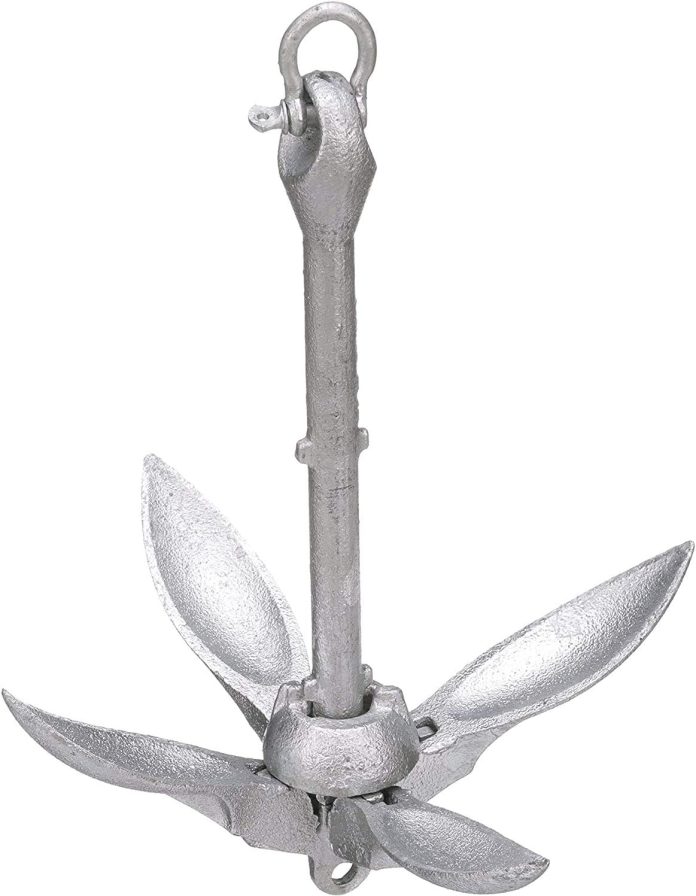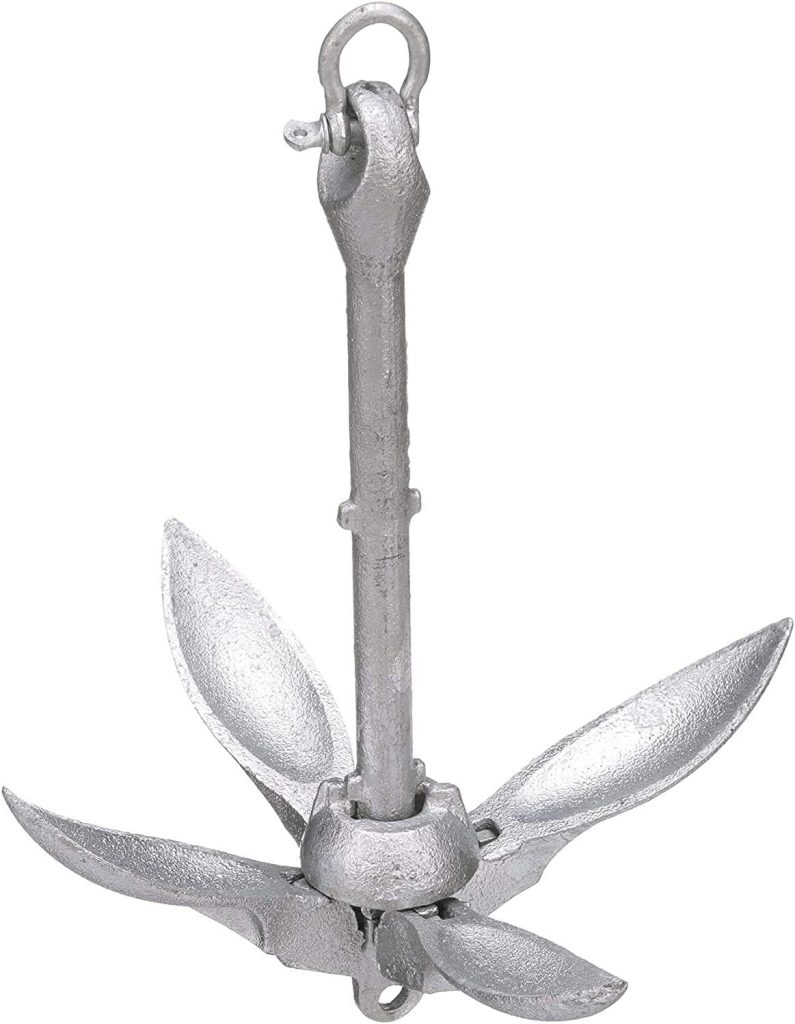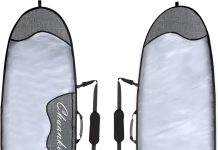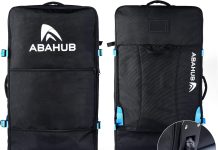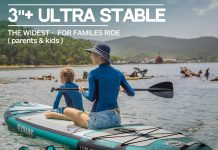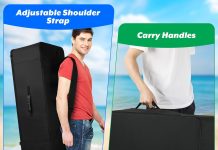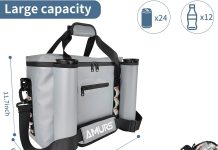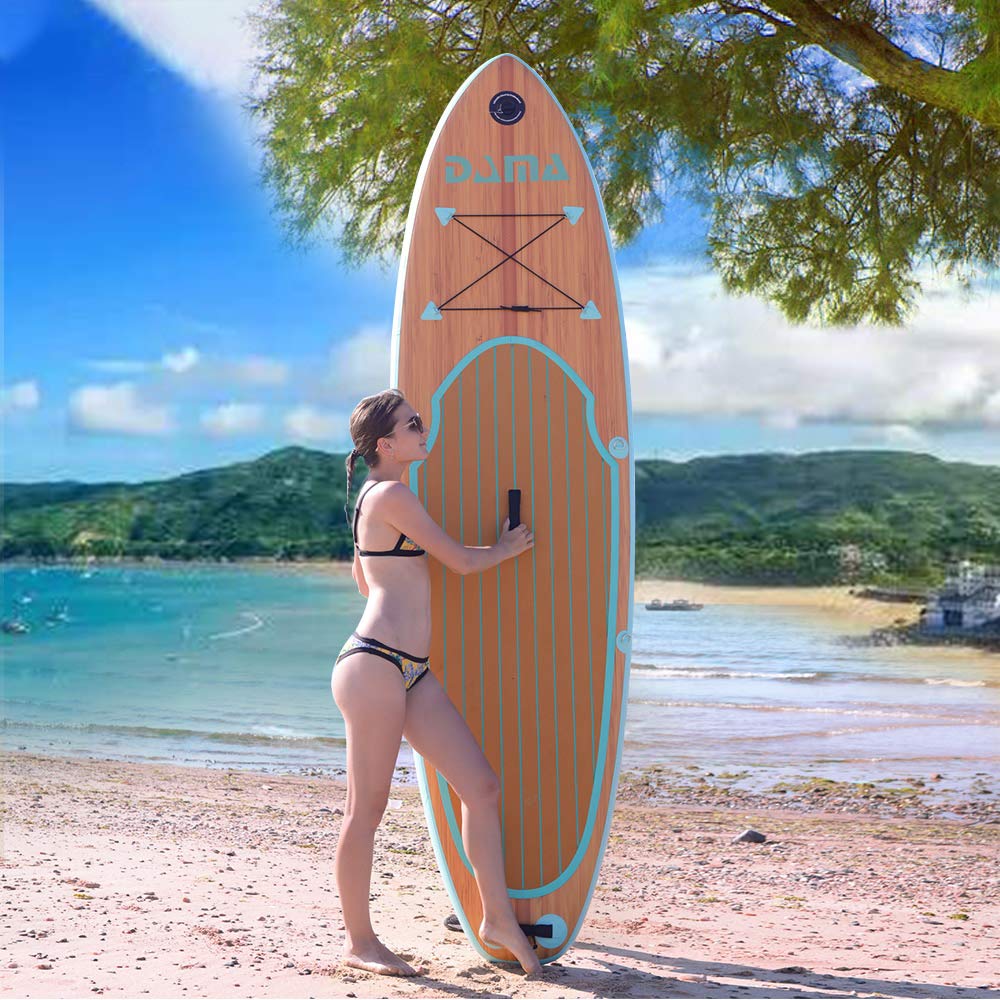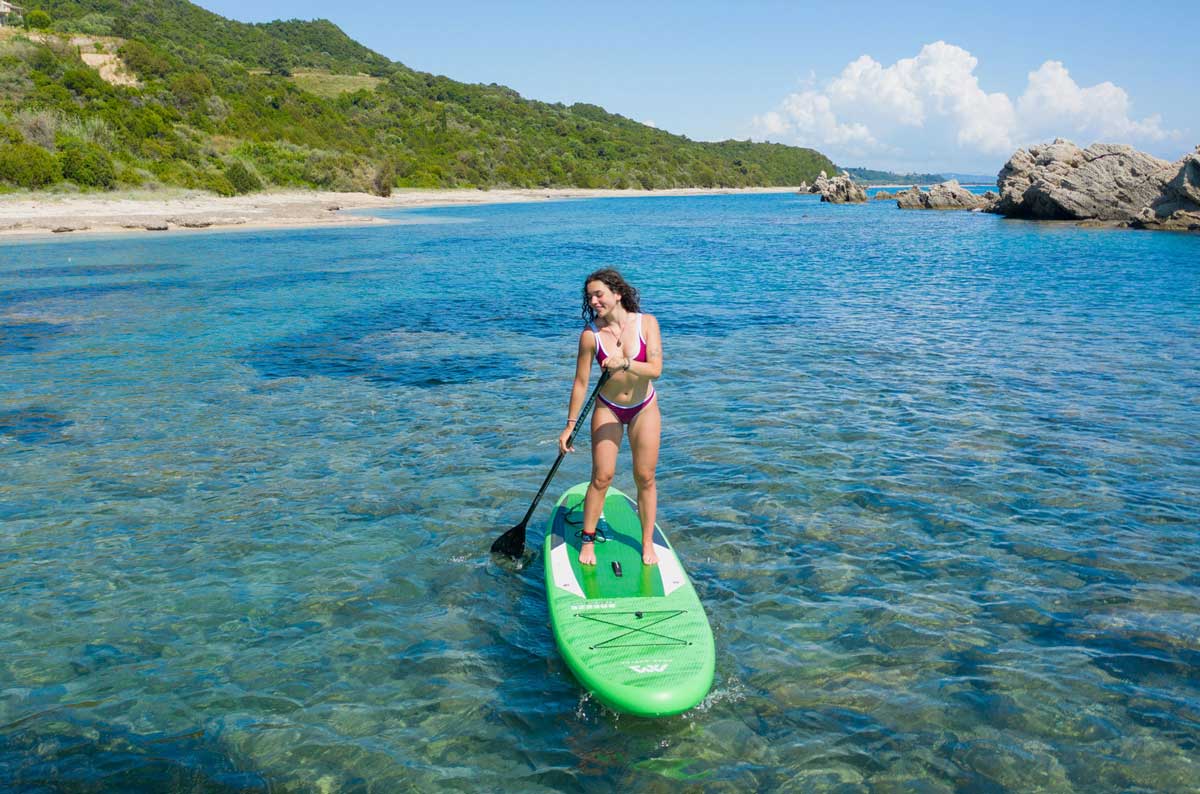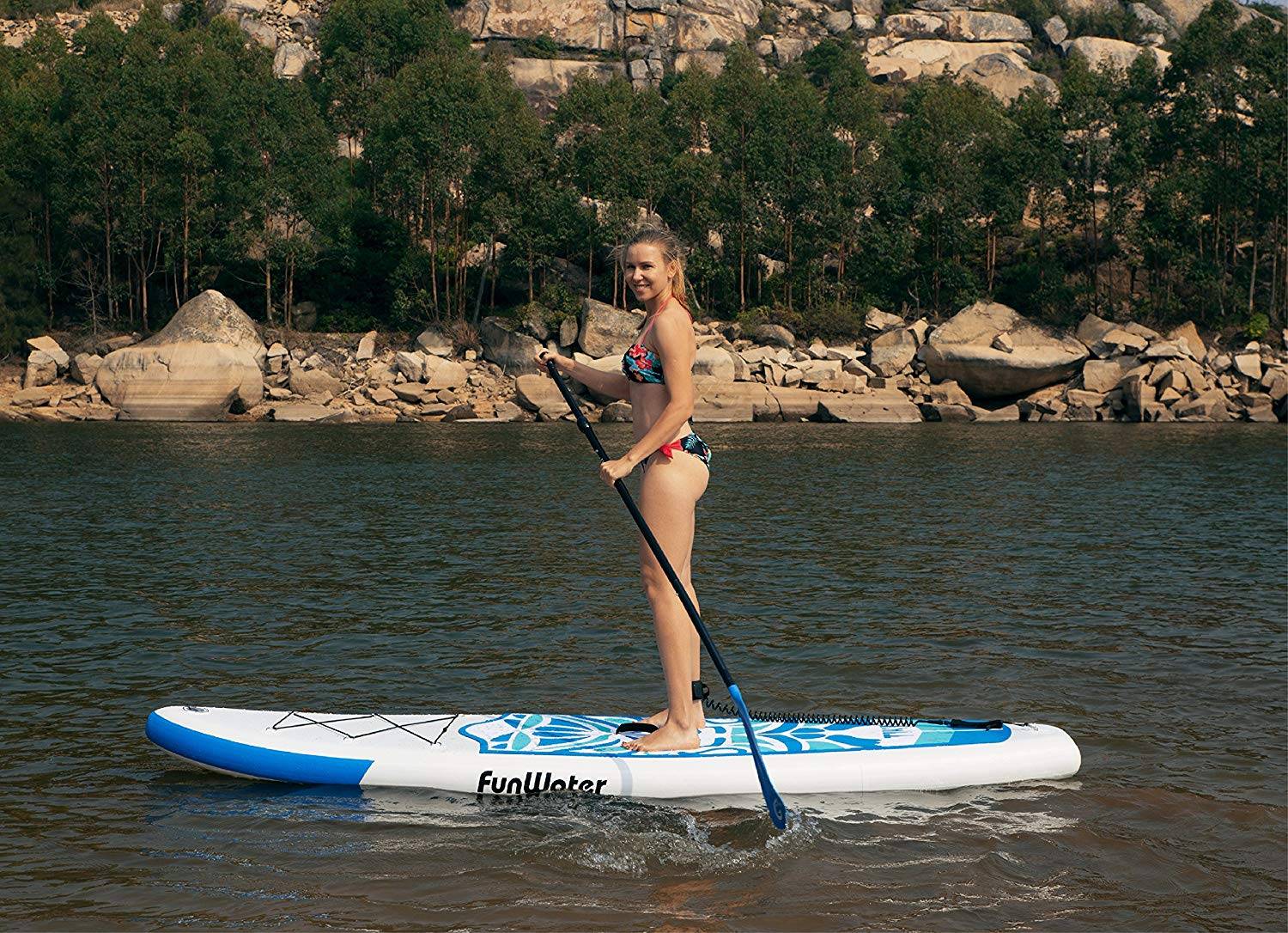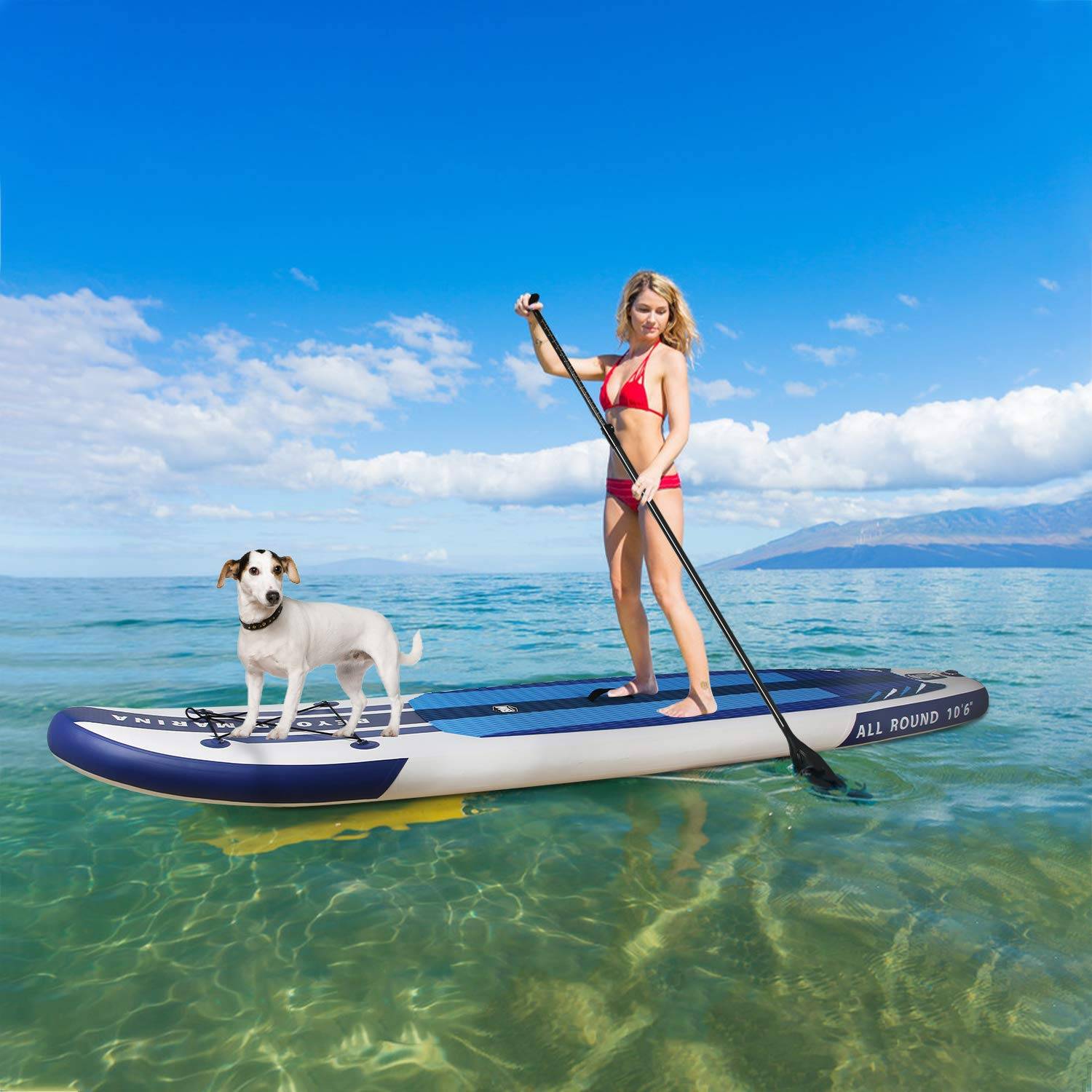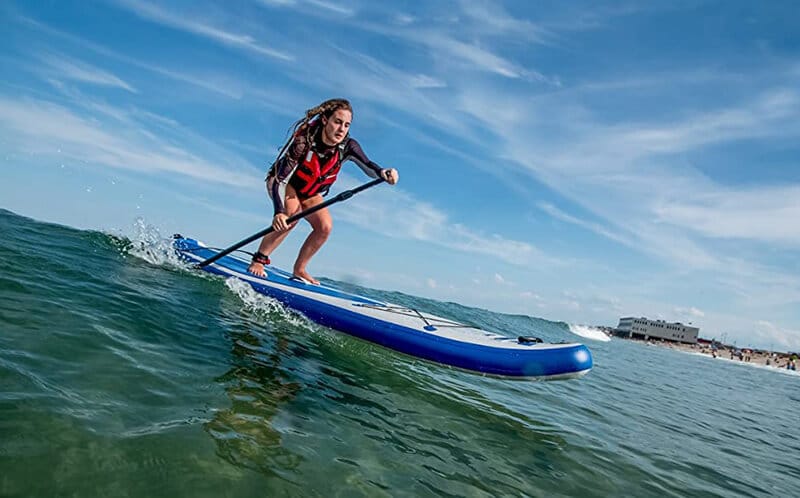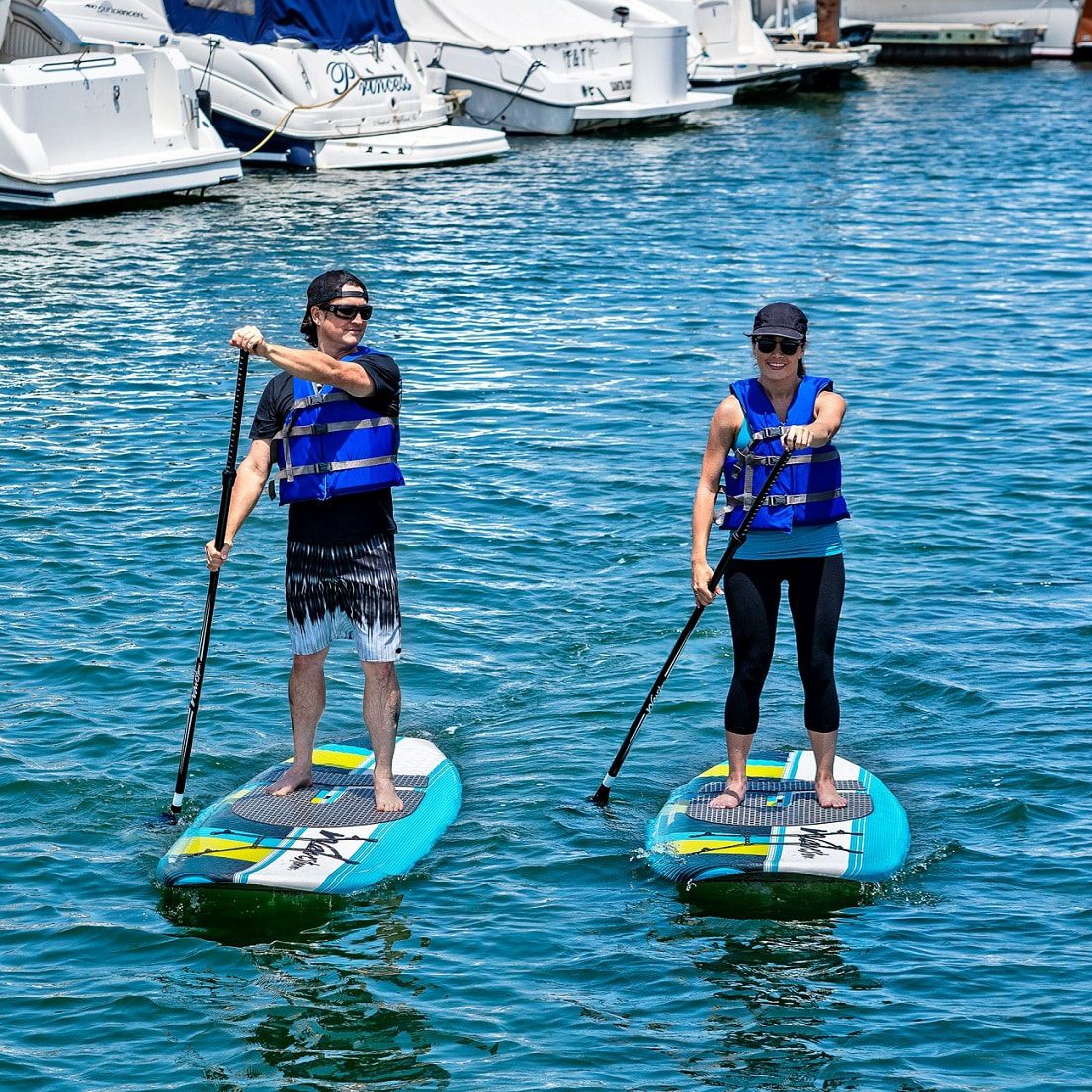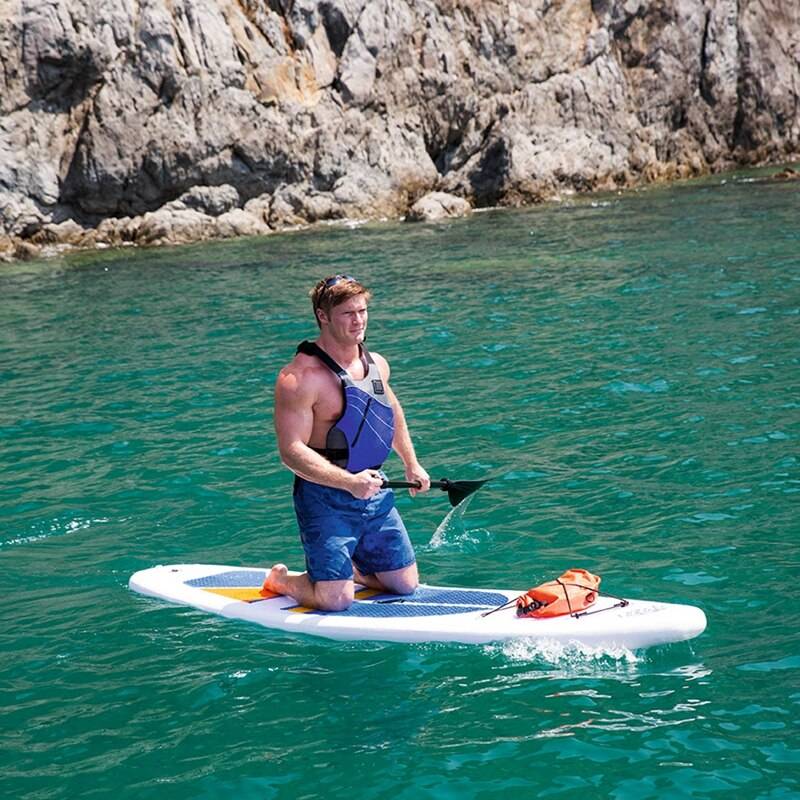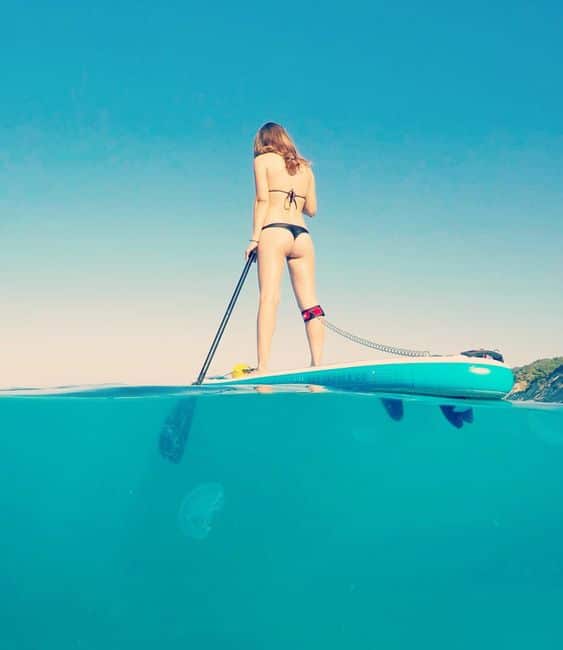Looking for a compact, reliable anchor that fits neatly on our kayak without sacrificing holding power?
Quick Verdict: Newport Folding Grapnel Kayak Anchor Kit – 3.5lb
We like this compact kit for small watercraft because it balances portability and performance. The Newport Folding Grapnel Kayak Anchor Kit – 3.5lb is ideal when we need a lightweight anchor that stows easily yet still holds well in many bottom conditions.
Why this verdict matters
We usually carry limited gear when paddling, and an anchor that’s small and quick to deploy makes anchoring practical rather than a chore. This kit’s combination of galvanized steel construction, stainless components, and included accessories means we get a usable system without hunting for extra parts.
Product Overview
We’ll summarize what the Newport Folding Grapnel Kayak Anchor Kit – 3.5lb includes and how it’s intended to be used. The 3.5lb, 4-fluke grapnel is designed to fold into a compact 12″x3″ package that’s easy to stow on kayaks, canoes, jet skis, and similar small craft. The kit is aimed at recreational paddlers and small boat owners who need a simple anchoring solution for short stops, photography, fishing, or resting.
Key features at a glance
We want to highlight the elements that make this kit useful right away. It ships as a complete package—anchor, shackle, rope, buoy, carabiner, and carrying bag—so we aren’t searching for compatibility parts. The marine-grade materials help the kit handle exposure to saltwater, though regular rinsing is recommended.
What’s Included in the Kit
We’ll list everything that arrives in the box and describe each item briefly. This helps us confirm the kit is truly complete and identify add-ons we may want later.
- 3.5lb 4-fluke grapnel anchor (folding)
- Anchor shackle (stainless steel)
- Rope (length varies by listing; typically 10–15 ft for kayak kits)
- Buoy (inflatable or foam; intended to mark anchor or assist retrieval)
- Carabiner (stainless steel for clipping to the boat)
- Carrying bag for storage and transport
Why the included items matter
We appreciate a kit that doesn’t force us to source separate shackles or clips. The stainless shackle and carabiner reduce one common failure point—rusted hardware—while the bag keeps everything contained and prevents the anchor from rattling or snagging gear in the hull.
Design and Build Quality
We’ll look at the construction and ergonomics of the anchor and accessories. The grapnel-style anchor features four flukes and a folding mechanism that collapses into a narrow package for storage. The construction uses galvanized steel for the anchor body and stainless steel for the shackle and carabiner.
Folding mechanism and usability
We find the folding flukes straightforward to operate: unfold and lock in place before deployment, and fold back down for stowing. The small folded footprint (approximately 12″x3″) makes it a practical item to carry on small watercraft where space is tight.
Materials and Corrosion Resistance
We’ll explain the materials and what that means for saltwater and freshwater use. The anchor is galvanized steel, which provides a protective zinc coating to slow rust. The shackle and carabiner are stainless steel, which offers better corrosion resistance in saltwater environments.
Care considerations for longevity
We always recommend rinsing the anchor and hardware in fresh water after each saltwater use to minimize corrosion and prolong service life. While the materials are marine-grade, repeated exposure and neglect will reduce lifespan; simple post-trip rinse-and-dry routines go a long way.
Specifications Table
We’ll break down the core spec points to help us compare and plan uses. This table summarizes the most relevant technical details for quick reference.
| Feature | Specification | Notes |
|---|---|---|
| Anchor type | 4-fluke grapnel (folding) | Good for rocky bottoms and mixed cover |
| Weight | 3.5 lb (approx. 1.6 kg) | Lightweight for kayaks and small craft |
| Folded size | ~12″ x 3″ | Very compact for stowage |
| Material (anchor) | Galvanized steel | Improved corrosion resistance vs. plain steel |
| Material (shackle/carabiner) | Stainless steel | Resists rust in saltwater |
| Included rope | Typically 10–15 ft | Check package for exact length; consider extra length for deeper water |
| Buoy | Included | Helpful for marking or retrieval |
| Carrying bag | Included | Keeps kit compact and clean |
| Best for | Kayaks, canoes, jet skis, small boats | Not intended for larger powerboats |
How we use these specs in practice
We rely on the weight and folded size when planning packing for a day trip. The 3.5lb weight is light enough not to significantly affect trim, yet heavy enough to help anchor in many bottom types commonly encountered inshore.
Performance and Holding Power
We’ll discuss how well the anchor holds in different seabed types and conditions. Grapnel anchors are designed to hook into rocks, roots, and wreckage, and they can perform adequately in gravel, broken shell, and heavier weed. They are not ideal for soft mud and are typically less effective in fine silt compared to plow or Danforth-type anchors.
Real-world holding observations
When we use it over mixed bottoms—rocky or with rubble—the flukes tend to catch and hold reliably for short stays. In kelp or thick weed, the anchor may snag rather than set; however, the multiple flukes increase the chance that at least one will find purchase. We remain cautious in sandy or silty bottoms and consider additional scope or alternative anchors in those conditions.
Deployment and Retrieval
We’ll explain how to deploy and retrieve the anchor safely and efficiently. Deployment is simple: unfold the flukes, secure the shackle to the rode, check the bottom for coral or fragile habitat, and lower the anchor gently to avoid damage. For retrieval, use the buoy to mark the anchor, move upwind or up-current, then pull vertically to dislodge.
Tips to make the process smoother
We always clip the carabiner to a dedicated anchor point or stern handle to avoid interfering with paddling. Using the included buoy makes locating the anchor easier, especially in choppy water or when visibility is limited. If the anchor snags, a measured tug or easing away at a different angle often frees it; in persistent snags, carrying a retrieval pole or sequence of pulls helps.
Safety and Environmental Considerations
We’ll cover safe anchoring practices and minimizing environmental impact. One important step before letting the anchor go is to check the bottom—especially in sensitive areas with coral reefs, seagrass beds, or protected habitats. Anchoring on coral can cause irreversible damage.
Responsible anchoring habits
We commit to lowering the anchor gently and using only enough scope to hold the boat without dragging. When anchoring near habitats that can be damaged, we either find an alternate anchorage with a non-sensitive bottom or use mooring buoys where available. Keeping our anchoring footprint minimal protects the places we love to paddle.
Maintenance and Care
We’ll outline a simple care routine to keep the Newport Folding Grapnel Kayak Anchor Kit – 3.5lb in good working order. After every saltwater trip we rinse the anchor, shackle, carabiner, and rope in fresh water and allow them to dry before stowing. Periodically we inspect the shackle pin, carabiner gate, and fold joints for wear or corrosion and replace components if anything looks compromised.
Recommended maintenance schedule
We perform a visual inspection after each use and a more thorough check at least monthly during heavy-season use. Lubricating moving parts with a light marine lubricant can help keep the folding action smooth; wipe excess lubricant to avoid attracting grime.
Pros and Cons
We’ll list the main advantages and limitations so we can make a balanced decision quickly.
Pros
- Compact folded size makes it easy to store on small craft.
- Complete kit includes anchor, shackle, rope, buoy, carabiner, and bag.
- Galvanized and stainless materials offer reasonable corrosion resistance.
- Simple to deploy and practical for short stops and fishing.
- Affordable option for recreational paddlers.
Cons
- Not ideal for fine silt or very soft mud—holding power is limited in those bottoms.
- 3.5lb weight may be insufficient in high winds or strong currents for larger small boats.
- Galvanized coating can wear over time; requires regular rinsing and care.
- Folding mechanism could become seized without maintenance.
How we balance these pros and cons
We find the positives outweigh the negatives for typical kayak and small-craft use where portability and convenience are priorities. For heavy-weather anchoring or extended overnight anchoring, we’d pair this kit with a heavier or more specialized anchor.
Comparing the Newport Kit to Alternatives
We’ll compare this kit to other popular small-craft anchors such as small Danforths, mushroom anchors, and heavier grapnels. Each style has trade-offs: Danforth anchors work well in sand and mud, mushroom anchors are excellent for long-term moorings in soft bottoms, and grapnels are superior in rocky, snaggy areas.
Why we might choose the Newport grapnel over others
If we expect to anchor in rocky or reef-strewn shorelines, the grapnel’s ability to catch on hard structure gives it an edge. Its folding design and included accessories also make it more convenient than many basic single-item anchors. If our primary anchor needs are sand or silty bays, we might pick a small Danforth or plow instead.
Use Cases: When To Bring This Anchor
We’ll identify specific scenarios where the Newport Folding Grapnel Kayak Anchor Kit – 3.5lb shines. This kit is a good match for short fishing stops, photography breaks, tide-line or rock-hopping exploration (avoiding the banned word), swimming, and basic station-keeping while we prepare gear.
Situations where we’d avoid it
We avoid relying on this anchor for overnight anchoring in exposed conditions, in strong tidal races, or when facing sustained winds over a moderate threshold. In those cases, we prefer a heavier anchor with greater holding power and more scope.
How to Choose the Right Rode and Length
We’ll discuss the rode included and how to decide if we need more. The kit typically provides a short length of rope suitable for shallow water and small craft. For deeper water or when significant tidal range exists, more length is often necessary to maintain proper scope.
Practical rule for scope
We usually aim for a minimum scope ratio of 5:1 (five feet of rode for every one foot of water depth) in calm conditions, increasing to 7:1 or more for choppy or windier conditions. On kayaks, practical limitations mean we often compromise by staying in shallower water or supplementing with a heavier anchor.
Assembly and First-Time Setup
We’ll walk through initial checks and setup steps so we’re comfortable using the kit the first time. Out of the bag we inspect the anchor and hardware, assemble the shackle and rope, and practice folding and unfolding the flukes on dry land. We also tie secure knots and attach the carabiner to a point on the boat designated for anchoring.
Practicing before hitting the water
We advise practicing deployment and retrieval from shore so that when we’re on the water we’re confident and efficient. Testing the folding mechanism and making sure the shackle pin is snug saves time and frustration later.
Storage and Packing Tips
We’ll share packing strategies to keep the anchor accessible yet secure. Stashing the bag under a hatch, in a dry compartment, or tied to a deck bungee keeps it handy without interfering with paddling. Securing the rope neatly in a coil prevents tangles.
Keeping it accessible but safe
We often clip the carabiner to a short line near the stern handle so it is easily reached if we need to anchor quickly. Avoid stowing the anchor where it can rattle and distract—silence and convenience matter on the water.
Troubleshooting Common Issues
We’ll address problems that can come up and how to fix them. If the anchor won’t set, we check the bottom type and try different angles or add a gentle reverse tug. If the folding joint is stiff, fresh-water rinse and light lubrication usually free it up.
If the anchor gets stuck
If the anchor is truly snagged, we move the boat laterally to change the pull angle or let out some rode and then attempt a vertical pull. Persistent snags may require a grappling retrieval technique or cutting the rope as a last resort. We’ll avoid damaging sensitive habitats while attempting retrieval.
Cost and Value
We’ll evaluate whether the kit represents good value for the price. For paddlers who need a compact, ready-to-go anchoring solution, the Newport Folding Grapnel Kayak Anchor Kit – 3.5lb offers strong value because it bundles the necessary hardware. The low weight and small size reduce handling and packing friction, which increases practical value beyond pure dollar cost.
Long-term ownership perspective
Over time, replacing worn shackles or ropes is inexpensive, but regular maintenance is required to sustain performance. For recreational users who follow care recommendations, the kit should last multiple seasons, making it a cost-effective accessory.
Customization and Upgrades
We’ll suggest common upgrades we might make to tailor the kit. Upgrading to a longer, better-quality rode (e.g., braided line or small chain/rope combination) increases scope and abrasion resistance. A quick-release clip or snubber can add ease of use and reduce shock loads on weak points.
Small modifications that improve usability
We often add a few feet of lightweight chain near the anchor to help it bite and reduce rope chafing. Replacing the included rope with UV-resistant, low-stretch line improves longevity and performance without much expense.
Final Recommendations
We’ll summarize who should buy this kit and who should look elsewhere. We recommend the Newport Folding Grapnel Kayak Anchor Kit – 3.5lb for kayak anglers, photographers, and recreational paddlers who need a compact anchor for short-term station-keeping in rocky or mixed-bottom environments. If our primary anchor needs are for soft mud or extended overnight stays in exposed conditions, we should consider a different anchor type or add a heavier secondary anchor.
Buying tips
We suggest checking the exact rope length on the product listing and considering whether a longer rode is necessary for your typical waters. Also inspect the folding mechanism and hardware when you receive the kit to confirm everything is secure and functions smoothly.
Frequently Asked Questions (FAQs)
We’ll answer common questions we’ve heard from paddlers about this kind of kit.
Q: Is 3.5lb enough for a kayak? A: For most kayaks in calm to moderate conditions and when anchoring in shallow water, 3.5lb is adequate for short stops. For larger inflatable kayaks, heavy gear loads, or windy conditions, we might upgrade to a heavier anchor.
Q: Can this anchor be used in saltwater? A: Yes—the galvanized anchor plus stainless hardware make it suitable for saltwater, but we must rinse in freshwater after use to minimize corrosion and prolong the kit’s life.
Q: How should we store the anchor onboard? A: Keep it in the provided bag and store it in a dry compartment or under a hatch. Make sure the rope is neatly coiled to prevent tangles.
Q: Will it damage coral? A: Anchoring on coral is highly damaging. We should avoid dropping anchors on coral and instead look for sandy or rocky patches where damage is unlikely. Use mooring buoys if available.
Q: Is the kit kid-friendly? A: The anchor is simple to use but weighs 3.5lb and contains metal parts. We recommend adult supervision when children are assisting with deployment or retrieval.
Closing Thoughts
We appreciate the convenience and compactness of the Newport Folding Grapnel Kayak Anchor Kit – 3.5lb. It’s a practical, complete kit that makes anchoring simple for small-craft users who frequent rocky or mixed-bottom areas. With basic care and sensible use, it can be an indispensable part of our paddling gear.
Final usage note
We’ll always match anchor choice to the conditions we expect to encounter and carry a plan B if we anticipate weather shifts or deeper water. This kit fits neatly into many of those plans and gives us a ready-to-go anchoring option that we can trust for short-term needs.
Disclosure: As an Amazon Associate, I earn from qualifying purchases.

